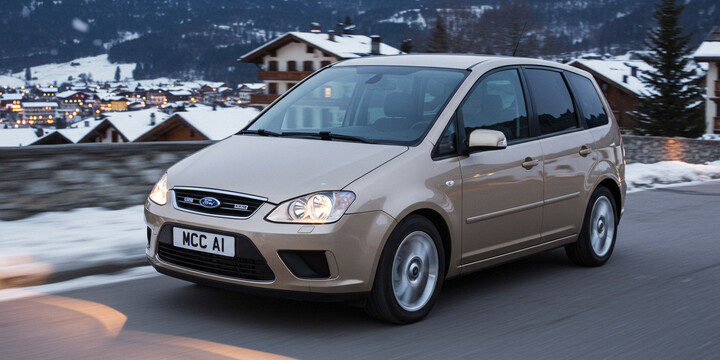
FORD C-MAX (2007-11)
The FORD C-MAX (2007-11) is a versatile and practical MPV (multi-purpose vehicle) that’s popular among UK drivers seeking a reliable family car. Known for its spacious interior, flexible seating options, and compact size, it’s an ideal choice for families, commuters, or anyone needing a dependable vehicle for everyday life. Its design makes city driving manageable, while its practicality ensures ample cargo space and comfort on longer trips.
With over 12,500 lookups on MyCarCheck.com and more than 6,300 unique VINs analyzed, the FORD C-MAX (2007-11) is a well-documented model. It’s appreciated for its affordability—averaging around £1,263 in private sales—and an average mileage of just over 103,000 miles, indicating reasonable usage. The typical owner has had around four previous keepers, reflecting a good balance of ownership history. Known for its straightforward driving experience, fuel efficiency, and solid reputation within the small MPV segment, the FORD C-MAX (2007-11) remains a popular choice for those seeking a dependable, family-friendly vehicle that offers great value in the used car market.

average use

The data on the most recent mileage readings for Ford C-Max (2007-2011) vehicles shows a concentration of vehicles with mileage between 80,000 and 120,000 miles, accounting for roughly 33% of the sample. The next most common range is 70,000 to 80,000 miles at 13%, followed closely by 110,000 to 120,000 miles at 13.7%. There are relatively few vehicles with extremely high mileage—over 200,000 miles—or very low mileage under 10,000, each representing less than 3% of the sample. This suggests that most vehicles in this group tend to cluster around the 80,000 to 120,000-mile mark, indicating the typical usage pattern within this age range.

vehicle values

The data indicates that the majority of private sale valuations for Ford C-Max models (2007-2011) are relatively low, with 69.1% of vehicles priced between £0 and £1,000. Meanwhile, 30.9% are valued between £1,000 and £2,000. This suggests that most of these vehicles are generally priced at the lower end of the private sale market, which could reflect factors such as vehicle age, condition, or market demand.

production years

The data indicates that the majority of Ford C-Max models from 2007 to 2011 were manufactured in 2008, accounting for 43.5% of the sample. Vehicles from 2009 and 2010 also make up significant portions, at 20.7% and 16.8% respectively. Interestingly, older models from 2007 comprise 17.5%, while very few vehicles, only 1.4%, were manufactured in 2011. This distribution suggests a high concentration of vehicles from the 2008 model year, possibly reflecting manufacturing trends or popularity during that period.

colour popularity

The data indicates that the most common main paint colour for Ford C-Max vehicles produced between 2007 and 2011 is blue, accounting for approximately 30.5% of the sample. Silver and black are also popular, representing 21.4% and 19.6% respectively. Red and grey are moderately common, at 9.5% and 18.6%, while purple is quite rare, making up only 0.4%. This suggests that buyers most frequently preferred blue, silver, and black colours during this period, with purple being a very uncommon choice.

ownership cycle

The data on registered keepers for the Ford C-Max (2007-11) indicates that most vehicles have undergone multiple owner changes, with the largest group (20.4%) having five registered keepers. Notably, nearly a fifth of the vehicles have had four maintainers (18.6%), and a substantial portion (17.2%) have had six owners. A smaller percentage (0.4%) each have had only one or fifteen owners, suggesting very low or very high owner turnover in these cases. The distribution demonstrates a tendency towards vehicles changing hands multiple times, which may reflect factors such as vehicle age, usage, or market preferences.

engine choices

The data on Ford C-Max (2007-2011) vehicles shows a diverse range of engine capacities, with the most common being 1596cc (26.7%), followed by 1798cc (22.1%) and 1753cc (16.8%). Smaller engine sizes like 1560cc and 1596cc collectively account for a significant portion of vehicles. In terms of fuel type, petrol engines are more prevalent, representing 66% of the vehicles, compared to 34% diesel engines. This suggests a preference among buyers for petrol models within this vehicle range, though diesel options still constitute a substantial minority.












